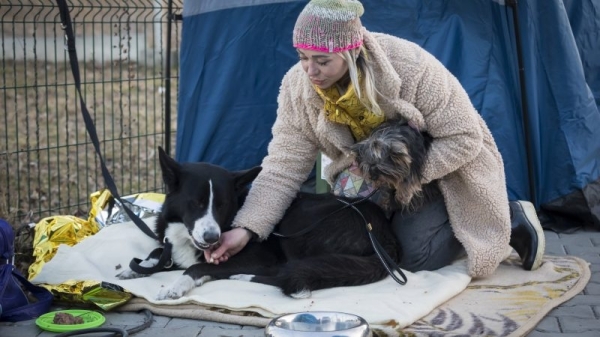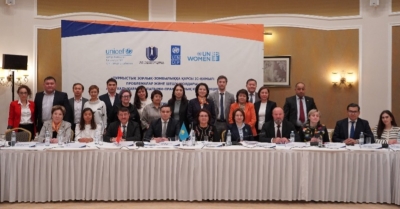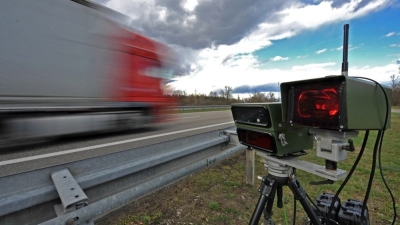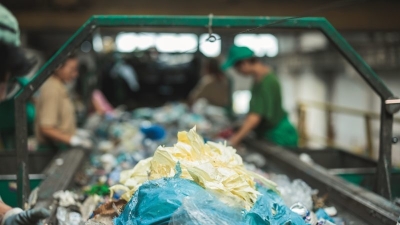European disaster resilience must include animals

Europe has experienced serious disasters and emergencies in recent years – from the wildfires that ravaged parts of Europe last year to the severe flooding in the summer of 2021, these events damage infrastructure, cause significant economic losses and claim lives. Then another crisis occurred with the Russian invasion of Ukraine one year ago leading to a humanitarian disaster resulting in millions of refugees and environmental impacts yet to be understood[1].
Data shows disasters are escalating in frequency and severity, unleashing devastation on a scale that is sadly becoming all too familiar[2]. The EU Civil Protection Mechanism (UCPM) aims to provide assistance and capacity when national authorities are overwhelmed. Between 2020 & 2022, the mechanism was activated over 320 times. To put that in perspective, that is five times more than the average of previous 10 years[3].
Due to this evolving risk landscape, the European Commission has adopted European Union Disaster Resilience Goals to strengthen the EU’s collective capacity to support prevention, preparedness and response to future disasters[4]. Unfortunately, the current European disaster framework lacks components focusing on the protection and rescue of animals and the role of veterinary services. Over 8 years ago, a conference on Natural Disasters and One-health hosted by the Latvian Presidency with IFAW and other partners recognized “an animal in a disaster can be a victim, a danger, a source of food, a rescuer or a sentinel. The care of animal health and welfare has been identified as a significant response capacity gap.”[5]
Humans are not alone in facing the outcomes of disasters. Animals and wildlife are impacted by these events and endure the aftermath that can produce widespread death, habitat fragmentation and destruction. IFAW has been responding to disasters internationally for two decades[6], because individual animals matter both in the context of conservation and due to their inherent value. Animals also matter because of their inextricable link to the well-being of our human society.
Even from a purely economic standpoint within existing policy such as the UN Sendai Framework for Disaster Risk Reduction (2015-2030) where animals are classified as an asset, ignoring animals in disaster management contributes to economic losses and reduction in benefits animals provide to the community[7]. For every dollar spent in the early stage intervention of animals in the 2012 Demaji floods in India, it was demonstrated that 96 dollars of economic benefit in livestock production were secured[8]. The inclusions of animals in disaster management is an effective step to help secure economic benefit after a disaster.
In disasters, people will often display unexpected and potentially risky behaviour based on concern for their animals[9]. Studies have shown that up to 70% of animal owners would attempt to evacuate with their animals[10]. People may refuse evacuation orders if pets are not evacuated with them and/or re-enter unsafe disaster zones to help animals[11]. Amongst the 195.4 million households recorded in the EU in 2020[12], 38% of them owned at least one pet, a number which is increasing[13]. Such numbers illustrate the importance of including animal welfare measures in disaster management policy. Awareness raising of European citizens is essential and IFAW’s disaster preparedness toolkits can help pet owners plan and prepare supplies for emergencies.
The reality is that civil protection authorities cannot work in isolation. A survey of EU Member States (MS) on emergency preparedness of veterinary services found that while the majority of responding MS had been impacted by disasters, the level of preparedness of authorities varies significantly across countries[14]. The survey concluded that the rescue of companion and farm animals impacted by a disaster is not always integrated in national civil protection mechanisms. It further recognised that “good cooperation with non-governmental organisations and stakeholders in ‘peace-time’ provides the foundation for effective measures in a natural disaster”.
Collaboration of civil protection, humanitarian, veterinary and animal welfare organisations to build capacity, conduct trainings and simulation exercises can increase preparedness and successful disaster response. International guidance, such as the World Animal Health Organisation’s Guidelines on Disaster Management, provide a holistic approach to strengthen disaster resilience, promote the health and welfare of animals, safeguard human health and help in restoration of economic and societal conditions when a disaster strikes[15]. It simply requires a multidisciplinary approach for cohesive disaster response plans.
The UCPM has seen its greatest mobilization with the war in Ukraine. A study on The Role of Pets in Preserving the Emotional and Spiritual Wellbeing of Ukrainian Residents During Russian Hostilities revealed that pets are perceived as family members and people actively tried not to abandon their animals[16]. IFAW’s Disaster Response team, together with our partners, was at the forefront of the crisis providing urgent support to refugees and their pets, funding shelters and zoos in need of critical supplies, and aiding with animal rescues. To date, IFAW has issued over 80 grants totaling more than € 1.4M helping more than 103,000 companion animals, horses and wild animals[17].
Recognising the amplification of response through collaboration of humanitarian and animal welfare sectors, IFAW partners with Mykolaiv Red Cross to provide food, shelter, and veterinary care for the basic needs of pets during active armed hostilities in the region as an integral part of the psychosocial and health support offered to the affected civilian population[18].
IFAW urges the EU to include animal welfare as part of a societal response to emergencies and disasters. This would contribute to Sendai Framework for Disaster Risk Reduction (due for mid-term review in May) and Sustainable Development Goals.
Let us learn from the devastating disasters and emergencies that have hit Europe recently by including animal welfare in EU Disaster Resilience planning, saving the lives of people and animals.
Further Reading
[1] https://www.bbc.com/future/article/20230221-the-toxic-legacy-of-the-ukraine-war
[2] https://www.undrr.org/gar2022-our-world-risk
[3]https://civil-protection-humanitarian-aid.ec.europa.eu/system/files/2023-02/COM_2023_61_1_EN_ACT_part1_v12.pdf
[4]https://civil-protection-humanitarian-aid.ec.europa.eu/system/files/2023-02/COM_2023_61_1_EN_ACT_part1_v12.pdf
[5] https://www.fve.org/cms/wp-content/uploads/Conclusions_FINAL.pdf
[6] https://www.ifaw.org/international/press-releases/include-animals-in-disaster-planning
[7] https://www.undrr.org/publication/sendai-framework-disaster-risk-reduction-2015-2030
[8] Campbell, R., & Knowles, T. (2011). The economic impacts of losing livestock in a disaster, a report for World Animal Protection. https://www.worldanimalprotection.ca/sites/default/files/media/ca_-_en_files/livestock_disaster_economics.pdf
[9] Hothersall, B. (2012) Perceptions and Practices of Emergency Preparedness amongst Animal Owners. Bristol, UK: University of Bristol.
[10] Hesterberg, U,W., Huertas, G. and Appelby, M.C. (2012) Perception of pet owners in urban Latin America on protection of their animals during disasters, Disaster Prevention and Management 21: 37-50.
[11] Chadwin R. (2017) Evacuation of Pets During Disasters: A Public Health Intervention to Increase Resilience, AmJ Public Health, 107:1413–1417https://www.ncbi.nlm.nih.gov/pmc/articles/PMC5551593/#bib2
[12] https://www.statista.com/statistics/1231300/number-of-private-households-in-the-eu/
[13] https://fediaf.org/who-we-are/european-statistics.html
https://www.statista.com/topics/3890/pet-market-in-europe/
[14]https://ec.europa.eu/food/audits-analysis/overview_reports/details.cfm?rep_id=124&rep_inspection_ref=xxx
[15] https://www.woah.org/app/uploads/2021/03/disastermanagement-ang.pdf
[16] https://link.springer.com/article/10.1007/s10943-022-01669-4
[17] https://www.ifaw.org/international/news/emergency-aid-ukraine
[18] https://www.ifaw.org/international/press-releases/animals-ukraine-help-warm-winter



